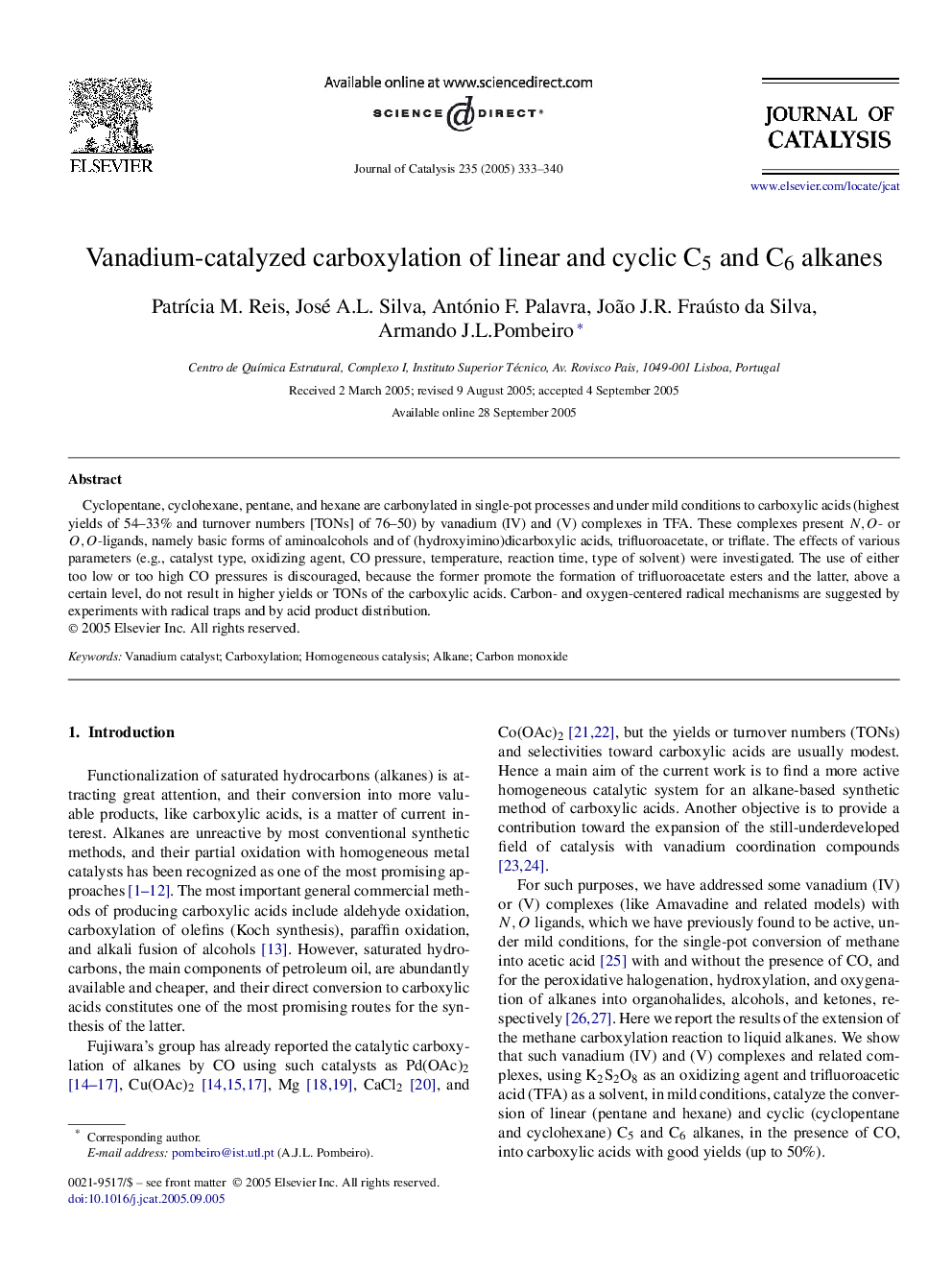| Article ID | Journal | Published Year | Pages | File Type |
|---|---|---|---|---|
| 10244458 | Journal of Catalysis | 2005 | 8 Pages |
Abstract
Cyclopentane, cyclohexane, pentane, and hexane are carbonylated in single-pot processes and under mild conditions to carboxylic acids (highest yields of 54-33% and turnover numbers [TONs] of 76-50) by vanadium (IV) and (V) complexes in TFA. These complexes present N,O- or O,O-ligands, namely basic forms of aminoalcohols and of (hydroxyimino)dicarboxylic acids, trifluoroacetate, or triflate. The effects of various parameters (e.g., catalyst type, oxidizing agent, CO pressure, temperature, reaction time, type of solvent) were investigated. The use of either too low or too high CO pressures is discouraged, because the former promote the formation of trifluoroacetate esters and the latter, above a certain level, do not result in higher yields or TONs of the carboxylic acids. Carbon- and oxygen-centered radical mechanisms are suggested by experiments with radical traps and by acid product distribution.
Related Topics
Physical Sciences and Engineering
Chemical Engineering
Catalysis
Authors
PatrÃcia M. Reis, José A.L. Silva, António F. Palavra, João J.R. Fraústo da Silva, Armando J.L. Pombeiro,
